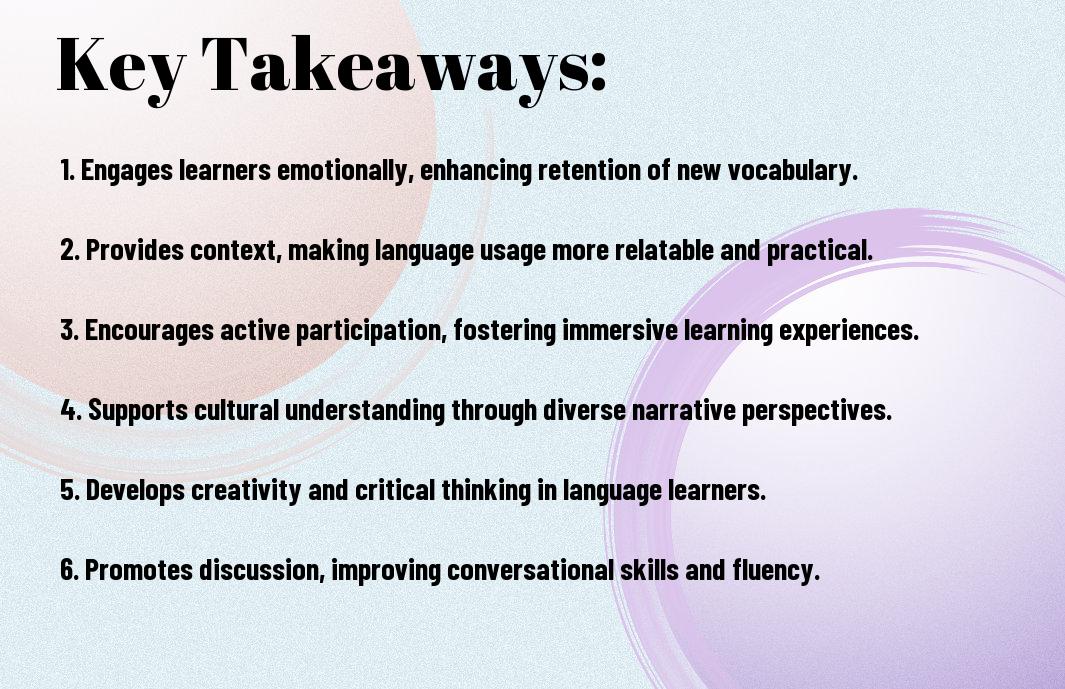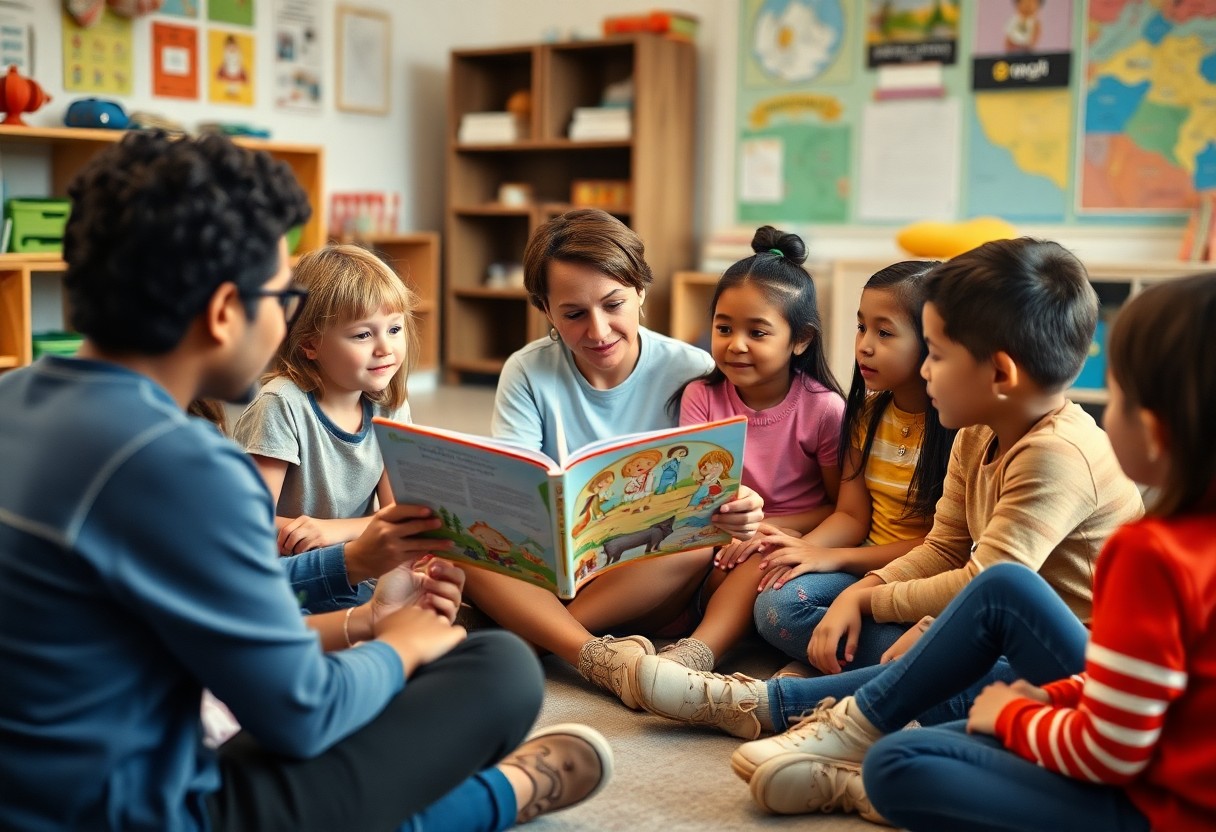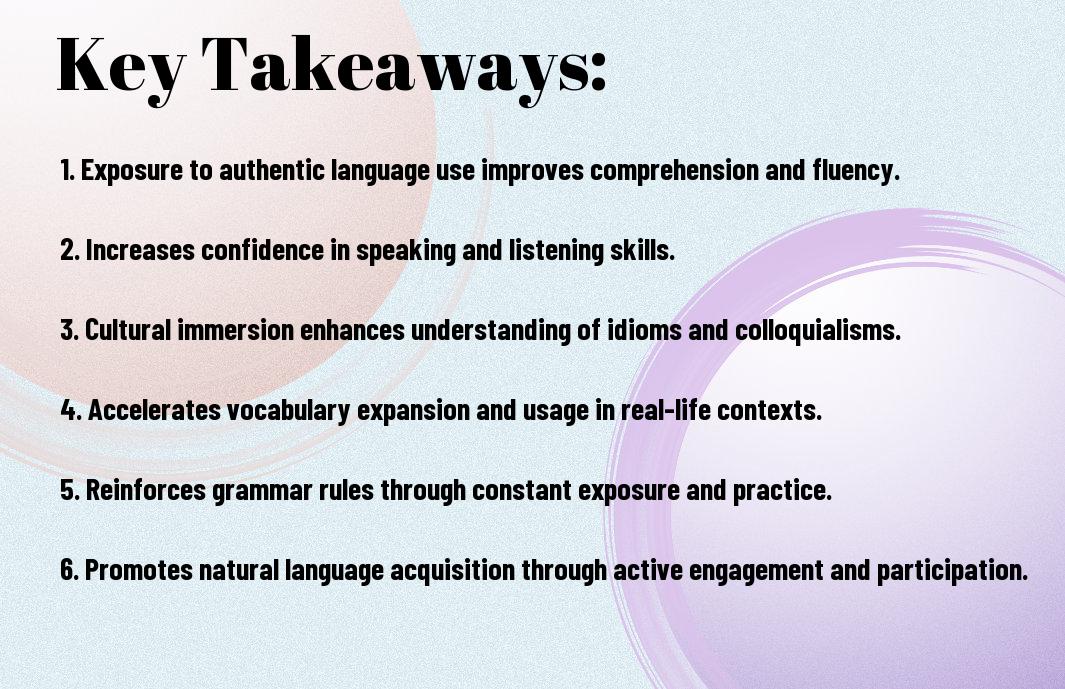As you explore the world of language learning, you’ll discover that storytelling plays a significant role in your ability to acquire a new language. Your brain is wired to respond to narratives, making storytelling an effective tool for language acquisition. By engaging with stories, you can improve your comprehension, vocabulary, and pronunciation, ultimately enhancing your overall language skills. As you investigate into the world of storytelling, you’ll find that it can make language learning a more enjoyable and interactive experience.
Key Takeaways:
- The power of storytelling in language acquisition lies in its ability to engage learners and promote emotional connection, making the learning process more enjoyable and effective.
- Authentic stories can help learners develop their listening and speaking skills, as they are exposed to natural language use and context.
- Storytelling can facilitate vocabulary acquisition by providing learners with contextualized examples of word usage, making it easier to understand and retain new words.
- The use of visual aids and gesture in storytelling can enhance learner comprehension and recall, as well as support multimodal learning.
- Interactive storytelling, where learners are encouraged to participate and contribute to the story, can foster collaboration and communication among learners, promoting a more dynamic language learning environment.
The Power of Narrative
Your ability to engage with a story can significantly enhance your language learning experience, as it allows you to connect with the content on a deeper level, making it more memorable and enjoyable.
Unlocking Language Skills
Achieving fluency in a language requires practice, and storytelling provides an effective way to do so, enabling you to develop your listening, speaking, reading, and writing skills in a captivating and interactive manner.
Cultural Significance of Storytelling
Unveiling the cultural context of a story can help you better understand the language, as it often reflects the values, traditions, and history of the community that speaks it, allowing you to gain a more nuanced understanding of the language.
Power of storytelling lies in its ability to convey cultural values and traditions, and as you explore different stories, you will gain insight into the diverse ways of life and perspectives that shape the language, enabling you to become a more empathetic and effective communicator.

Language Acquisition through Storytelling
Now, as you examine into the world of language acquisition, you’ll find that storytelling plays a significant role. You can explore this concept further by reading The role of storytelling on language learning: A literature review to understand its impact on your language skills.
Vocabulary Expansion
Besides enhancing your comprehension, storytelling helps you discover new words and phrases, expanding your vocabulary and enabling you to express yourself more effectively in your target language.
Grammar and Syntax Development
At the heart of language acquisition lies grammar and syntax development, which is facilitated through storytelling, as you’re exposed to various sentence structures and grammar rules in context.
Consequently, as you engage with stories, you’ll start to notice patterns and relationships between words, phrases, and clauses, allowing you to develop a deeper understanding of how the language works and improving your ability to communicate effectively.

The Role of Imagination
Not surprisingly, imagination plays a significant role in language acquisition, as it enables you to create mental images and scenarios that help you understand and engage with the language. You can find more information on The importance of storytelling for teaching English and how it enhances your imagination.
Creative Expression
Any attempt to acquire a language requires creative expression, and you can achieve this through storytelling, allowing you to develop your linguistic skills in a more engaging and effective way.
Empathy and Perspective-Taking
Empathetically, you can understand the perspectives of others through stories, which helps you develop a deeper understanding of the language and its cultural context.
Expression of emotions and thoughts is a key aspect of language acquisition, and as you engage with stories, you develop your ability to understand and express empathy, which in turn enhances your perspective-taking skills, enabling you to see things from different viewpoints and broaden your understanding of the language.
Storytelling in the Classroom
Despite the challenges of language acquisition, you can create an engaging learning environment by incorporating storytelling into your teaching practice. This approach helps your students develop their language skills in a more interactive and immersive way, making the learning process more enjoyable and effective.
Teaching Methods and Strategies
Taking a student-centered approach, you can use storytelling to facilitate language acquisition by making it more relatable and interesting, thus enhancing your teaching methods and strategies to better suit your students’ needs.
Student Engagement and Motivation
Besides promoting language skills, storytelling also fosters student engagement and motivation, as you encourage your students to participate in the storytelling process, making them more invested in their learning journey.
But as you research deeper into the concept of student engagement and motivation, you will notice that storytelling has a profound impact on your students’ willingness to learn, as it allows them to connect with the material on a deeper level, making the learning experience more enjoyable and increasing their motivation to continue improving their language skills.
The Impact of Digital Media
All around you, digital media is transforming the way you learn and interact with languages, and storytelling is at the forefront of this revolution. You can now access a vast array of language learning resources and tools online, making it easier than ever to immerse yourself in a new language.
Multimedia Storytelling
Almost any language learning platform now incorporates multimedia storytelling elements, such as videos, podcasts, and interactive games, to help you engage with the language in a more dynamic way. You can watch videos, listen to podcasts, and play games that transport you to different cultures and languages.
Online Resources and Tools
By utilizing online resources and tools, you can take your language learning to the next level. You can access language exchange websites, online courses, and mobile apps that offer interactive lessons and exercises to help you practice your language skills.
Tools such as language learning apps and online platforms provide you with a wealth of resources to support your language learning journey. You can use these tools to practice your speaking, writing, and listening skills, and even connect with native speakers to get feedback on your progress. As you explore these online resources, you’ll find that you can tailor your learning experience to your needs and interests, making language acquisition more enjoyable and effective.
The Art of Storytelling
Many language learners have discovered that storytelling is an effective way to acquire a new language. You can immerse yourself in the language and culture by listening to or reading stories. This approach helps you develop your language skills in a more engaging and interactive way, making the learning process enjoyable and effective.
Oral Tradition and Heritage
Beneath the surface of language acquisition lies a rich oral tradition that has been passed down through generations. You can explore the heritage of a language by listening to its stories, which often reflect the culture, history, and values of its speakers. As you research into these stories, you gain a deeper understanding of the language and its context.
Modern Applications and Innovations
Toward the forefront of language learning are modern applications and innovations that utilize storytelling. You can now access a wide range of digital tools and resources that use stories to teach languages, making it more convenient and fun for you to learn. These innovations have opened up new possibilities for language learners like you to engage with the language in a more immersive and interactive way.
Applications of storytelling in modern language learning are diverse and extensive. You can use podcasts, videos, and interactive stories to practice your listening and speaking skills. As you progress, you can create your own stories and share them with others, which helps you develop your writing and speaking skills. By leveraging these modern applications, you can make your language learning journey more enjoyable, effective, and rewarding, and achieve your goals in a shorter amount of time.
Summing up
Ultimately, as you explore the role of storytelling in language acquisition, you realize its significance in enhancing your linguistic skills. You find that storytelling helps you develop your vocabulary, grammar, and pronunciation. Your ability to comprehend and communicate effectively in a new language improves significantly when you engage with stories. By leveraging storytelling, you can make your language learning journey more engaging and effective, leading to better retention and overall language proficiency.
FAQ
Q: What is the significance of storytelling in language acquisition, and how does it impact the learning process?
A: Storytelling plays a vital role in language acquisition as it provides learners with a meaningful context to understand and internalize new vocabulary, grammar, and syntax. Through stories, learners can develop their listening and comprehension skills, as well as their ability to express themselves effectively in the target language.Moreover, storytelling helps to create an emotional connection between the learner and the language, making the learning process more engaging and enjoyable.
Q: How does storytelling facilitate language acquisition in terms of vocabulary building and grammar development?
A: Storytelling is an effective way to build vocabulary and develop grammar skills in language learners. Stories often contain a wide range of vocabulary in context, allowing learners to understand the meanings and usage of words and phrases. Additionally, stories typically follow a narrative structure, which helps learners to develop their understanding of grammar and sentence structure. As learners engage with stories, they can identify and practice using grammatical patterns, such as verb tenses, conditional sentences, and clause structures, in a more authentic and engaging way.
Q: Can storytelling be used as a teaching methodology in language classrooms, and what benefits does it offer to language teachers and learners?
A: Yes, storytelling can be a highly effective teaching methodology in language classrooms. It offers numerous benefits to both language teachers and learners. For teachers, storytelling provides a flexible and adaptable approach to teaching language skills, allowing them to tailor their instruction to the needs and interests of their learners. For learners, storytelling provides an engaging and interactive way to learn a language, helping to increase motivation, participation, and overall language proficiency. Furthermore, storytelling can be used to teach a range of language skills, including reading, writing, listening, and speaking, making it a valuable addition to any language teaching methodology.



